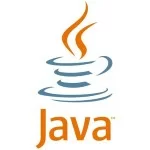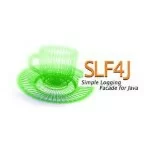Apache Camel: Integrating Java with Enterprise Systems
In today’s complex enterprise environments, systems need to communicate with each other across various protocols, data formats, and technologies. Apache Camel serves as a powerful integration framework that facilitates the seamless communication between these systems. With its rich set of patterns, component architecture, and wide array of connectors, Apache Camel allows developers to easily integrate Java applications with different enterprise systems like REST, SOAP, JMS, FTP, and more.
1. What is Apache Camel?
Apache Camel is an open-source integration framework designed to solve the complexities of integrating disparate systems and applications. It enables Java developers to implement Enterprise Integration Patterns (EIP) to connect systems via various communication protocols like HTTP, JMS, FTP, and more. Camel provides a highly modular, flexible, and extendable architecture for routing and processing data across different formats and technologies. Its primary goal is to simplify and automate the integration of multiple systems in a clean and maintainable manner.
2. Key Capabilities of Apache Camel
1. Enterprise Integration Patterns (EIP)
Apache Camel incorporates Enterprise Integration Patterns (EIP), a set of 65+ patterns that provide solutions for common integration challenges. These patterns help structure and define the data flow and message routing for enterprise applications. Some of the most commonly used EIPs in Camel include:
- Message Routing: Direct, recipient list, multicast, and content-based routing are supported to send messages to the correct destination.
- Message Transformation: Convert messages from one format to another using transformers like XML to JSON or CSV to POJO.
- Error Handling: Includes retries, dead-letter queues, and circuit breakers to manage errors in the integration process effectively.
By utilizing these patterns, Camel makes it easier for developers to manage integration logic and keep the systems decoupled and maintainable.
2. Component Architecture
At the heart of Apache Camel is its component architecture, which enables integration with a variety of systems and protocols. Camel has over 300 components that connect Java applications to enterprise systems, databases, messaging queues, APIs, and more. These components provide out-of-the-box solutions for integrating with different technologies, saving developers significant time and effort.
Here are some notable components:
- REST and SOAP: Camel provides robust support for integrating REST and SOAP web services, allowing data to flow seamlessly between Java applications and external systems.
- JMS (Java Message Service): Camel integrates with JMS providers like ActiveMQ and IBM MQ for message-based communication.
- FTP and SFTP: Apache Camel supports file transfers using FTP and SFTP, enabling file-based integrations.
- Database Connectivity: Camel also provides connectors for relational and NoSQL databases (e.g., MySQL, MongoDB), helping bridge the gap between different data stores.
These components make it easy to set up complex integrations without having to manually handle low-level networking and communication details.
3. Camel Routes
In Camel, integrations are defined using routes. A route is a series of instructions that define how messages are transferred from one system to another, which protocols to use, and how data is transformed or processed along the way. These routes are configured using either Java DSL, XML DSL, or Spring XML, allowing developers to choose the syntax they are most comfortable with.
Here’s a simple example of a Camel route in Java DSL:
1 2 3 4 5 6 7 8 9 | import org.apache.camel.builder.RouteBuilder;public class MyRoute extends RouteBuilder { @Override public void configure() { from("file:/inputDirectory") .to("file:/outputDirectory"); }} |
In this example, Camel watches a directory for new files and moves them to another directory once detected. More complex routes can include transformations, filters, error handling, and more.
3. How Apache Camel Enhances Java Integration
1. Simplified Communication Across Multiple Systems
In enterprise environments, systems are often built using different technologies, protocols, and formats. Apache Camel provides a unified framework for integrating these systems by abstracting the complexity of different communication protocols. Whether it’s a REST API, SOAP web service, JMS queue, or file system, Apache Camel simplifies the process by offering standardized ways to communicate across these systems.
2. Reduced Development Time
Building integrations from scratch can be time-consuming, especially when developers have to deal with various protocols and error-handling logic. Apache Camel eliminates much of the boilerplate code by providing pre-built components and EIPs. Developers can focus on writing business logic instead of worrying about low-level integration details. The extensive documentation and large community also make it easier to get started.
3. Scalability and Flexibility
Apache Camel is highly scalable and can be used to integrate small applications or enterprise-wide systems. The framework allows you to create routes that are easily extensible, ensuring that it can handle growing integration needs over time. Camel’s support for various runtime environments like standalone, Spring, or Kubernetes adds to its flexibility, allowing it to fit into different enterprise infrastructures.
4. Advanced Error Handling
Integration systems are prone to failures, and managing errors effectively is crucial for ensuring reliability. Apache Camel’s robust error-handling mechanisms, such as retries, circuit breakers, and dead-letter queues, allow you to build resilient integrations. This ensures that even if something goes wrong, the system will handle the error gracefully and maintain system integrity.
4. Real-World Use Cases of Apache Camel
1. E-Commerce Platform Integration
An e-commerce company needed to integrate its order management system (OMS) with its payment gateway, inventory system, and customer notification services. Apache Camel was used to create routes that handled the communication between these systems. Camel’s components for REST, JMS, and FTP were leveraged to ensure that orders were processed, payments were confirmed, inventory levels updated, and customers were notified, all with minimal custom code.
2. Financial Services
A financial institution needed to handle real-time transactions between different banking systems. Apache Camel enabled integration between core banking systems, payment gateways, and fraud detection systems. Camel routes were used to route transactions, validate them, and ensure that they met the necessary conditions before being processed, all while supporting the various protocols involved, such as JMS, SOAP, and HTTP.
3. Cloud and Hybrid Integrations
In a hybrid-cloud environment, Apache Camel was used to integrate on-premise applications with cloud-based services. The framework’s support for cloud technologies like AWS, Azure, and Google Cloud allowed seamless communication between legacy systems and modern cloud applications. Camel’s ability to connect different environments without significant changes to the underlying systems was key to the success of the integration.
5. Conclusion
Apache Camel is a powerful, flexible, and easy-to-use integration framework that simplifies communication between Java applications and enterprise systems. By offering a comprehensive set of components, supporting multiple communication protocols, and providing a clear structure for defining integration logic with Enterprise Integration Patterns, Camel stands out as an ideal solution for complex enterprise integration challenges. Whether you’re working with REST APIs, SOAP web services, or message queues, Apache Camel enables seamless, scalable, and maintainable integrations that bridge the gap between diverse systems and technologies.





